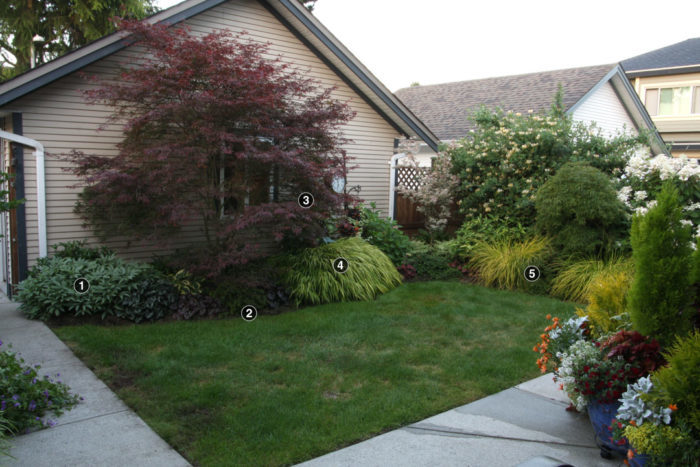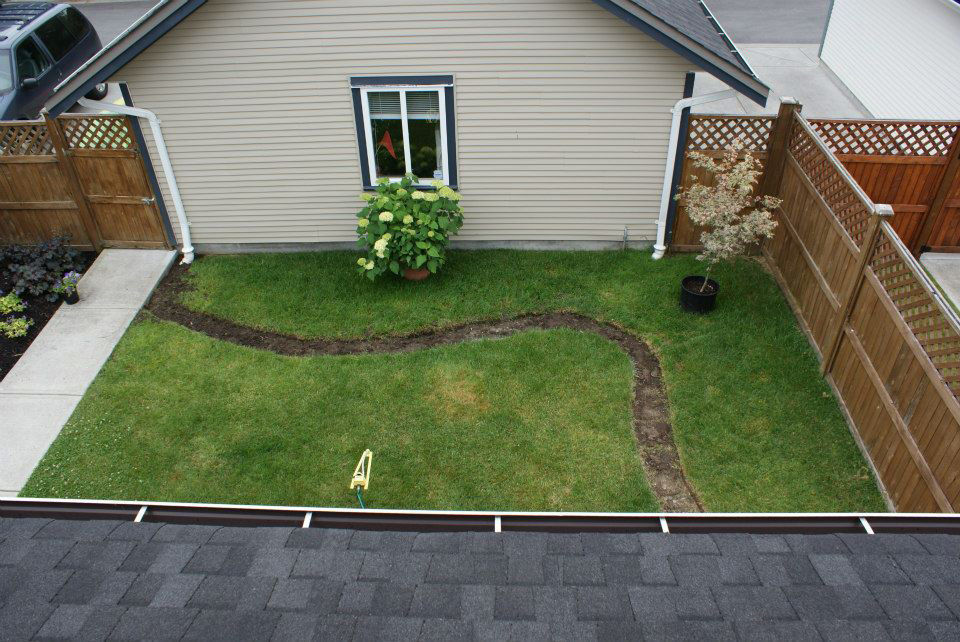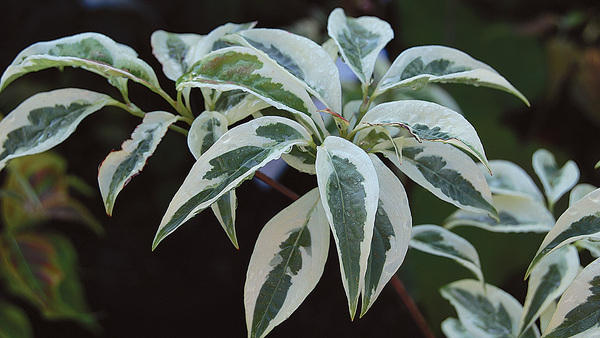
Cherry and Raymond Ong knew that it would be impossible to re-create the lush tropics of their native Philippines at their home in British Columbia. But they also knew that the cookie-cutter landscape typical of their 12-lot development would not suffice. Their 30-foot-long and 17-foot-wide backyard consisted of a fenced-in patch of lawn and a concrete path leading from the garage to the house. It lacked even a single plant and was wide open on both sides to neighbors only a few feet away. In addition to an abundance of plants, the couple wanted privacy and to learn how to garden. They sought the services of a designer at a local nursery, who taught them that they didn’t need a lot of space—or a lot of money—to employ key design principles to achieve their goals. A mere five years later, their garden is the envy of the neighborhood.

Design lessons
1. Create movement by using contrasting shapes.
Employing a mix of mounding, conical, and ground-hugging plants fosters a sense of movement. The eye is drawn to and settles on different places, making an area feel spacious, full, and dynamic.
2. Soften an area with curves.
A curved bed works well to soften a space and to create depth, especially when the area is defined by straight lines. Curves encourage visitors to meander and slow down, which also makes a small space seem bigger.
3. Use a single plant as a focal point.
Although it is a well-accepted design principle to plant in multiple, odd-numbered clusters, there’s no substitute for a lone specimen plant in the right location. Here, the regal burgundy ‘Beni-otake’ Japanese maple (Acer palmatum* ‘Beni-otake’, USDA Hardiness Zones 5–8) serves two purposes: It blocks an unattractive view of the garage from the house and creates a striking visual impact.
4. Repeat colors to establish harmony.
The repetition of colors pulls a garden together and creates a calming effect—especially in a small space, where too much color can be jarring. Here, ‘Aureola’ Japanese forest grass (Hakonechloa macra ‘Aureola’, Zones 5–9) weaves together with Bowles’ golden sedge (Carex elata ‘Aurea’, Zones 5–9) to achieve a unified look.
5. Contrast textures to add drama.
Although it is acceptable to combine plants with similar textures, you can increase interest and excitement by using plants of differing textures: grassy blades, large and small leaves, and needles, for example. Also, strategically placed planters with varied surfaces add pizzazz.
Lynn Felici-Gallant is the associate editor.
Photos: Danielle Sherry; courtesy of Raymond and Cherry Ong

















Comments
Log in or create an account to post a comment.
Sign up Log in